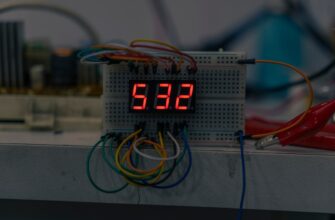- Understanding Ledger Security and Hacker Threats
- How Hackers Compromise Ledger Wallets
- Is Recovery from Hackers Ever Safe? The Hard Truth
- Immediate Steps If Your Ledger Is Hacked
- Fortifying Your Ledger Against Future Attacks
- FAQs: Ledger Hacks and Recovery Safety
- Can Ledger legally recover my stolen crypto?
- Should I pay ransom if hackers contact me?
- Are third-party recovery services safe?
- How do I verify if my Ledger is genuine?
- Can I reuse my seed phrase after a hack?
Understanding Ledger Security and Hacker Threats
Ledger hardware wallets are designed as “cold storage” devices to keep cryptocurrencies offline and secure. Unlike software wallets, they store private keys in a secure chip isolated from internet-connected devices. However, sophisticated hackers employ tactics like phishing scams, malware injections, and supply chain attacks to compromise these devices. When hackers gain access, victims often wonder: is it safe to recover ledger from hackers? The short answer is extremely risky—attempting recovery without expert guidance can lead to permanent asset loss.
How Hackers Compromise Ledger Wallets
Common attack vectors include:
- Phishing scams: Fake Ledger Live updates or customer support emails trick users into sharing recovery phrases
- Malware attacks: Keyloggers or screen grabbers capturing seed phrases during manual entry
- Physical tampering: Modified devices intercepting recovery phrases before first use
- Social engineering: Impersonation tactics pressuring victims to reveal security details
Once compromised, hackers monitor blockchain activity, waiting for substantial deposits before draining wallets.
Is Recovery from Hackers Ever Safe? The Hard Truth
Attempting to recover a hacked Ledger involves catastrophic risks:
- Seed phrase exposure: Hackers often implant malware to capture recovery attempts in real-time
- False sense of security: Moving funds to a “new” wallet might use compromised software
- Advanced persistent threats: Sophisticated attackers leave backdoors for future access
- Irreversible transactions: Blockchain’s immutable nature means stolen crypto is rarely recoverable
Professional blockchain forensic services may help trace funds, but success rates are low. Prevention remains infinitely safer than attempted recovery.
Immediate Steps If Your Ledger Is Hacked
If you suspect compromise:
- Disconnect immediately: Unplug your Ledger from all devices
- Document everything: Record transaction IDs, hacker addresses, and attack details
- Contact Ledger Support: Use official channels (avoid phishing links)
- Report to authorities: File reports with IC3 (FBI) or local cybercrime units
- Never attempt DIY recovery: Consult blockchain security specialists before any action
Fortifying Your Ledger Against Future Attacks
Implement these non-negotiable security practices:
- Use a passphrase: Add a 25th custom word to your seed phrase (BIP39 standard)
- Verify transactions manually: Always confirm addresses on your Ledger screen
- Enable 2FA: For all exchange accounts linked to your wallet
- Purchase directly: Only buy Ledgers from ledger.com to avoid tampered devices
- Regular firmware updates: Install patches immediately through Ledger Live (verify URLs)
FAQs: Ledger Hacks and Recovery Safety
Can Ledger legally recover my stolen crypto?
No. As a non-custodial wallet provider, Ledger cannot access funds or reverse transactions. Recovery depends on law enforcement investigations.
Should I pay ransom if hackers contact me?
Never. Ransom payments have zero success rate in crypto recovery and fund criminal operations.
Are third-party recovery services safe?
Most are scams. Only consider firms with verifiable success records and avoid any requesting upfront payment or seed phrases.
How do I verify if my Ledger is genuine?
Use Ledger’s genuine check in Ledger Live during setup. Tampered devices fail this cryptographic verification.
Can I reuse my seed phrase after a hack?
Absolutely not. Consider any exposed seed phrase permanently compromised. Generate a new one with a factory-reset device.
Remember: Proactive security beats reactive recovery. Treat your seed phrase with the same secrecy as a bank vault combination—once compromised, the damage is often irreversible.








